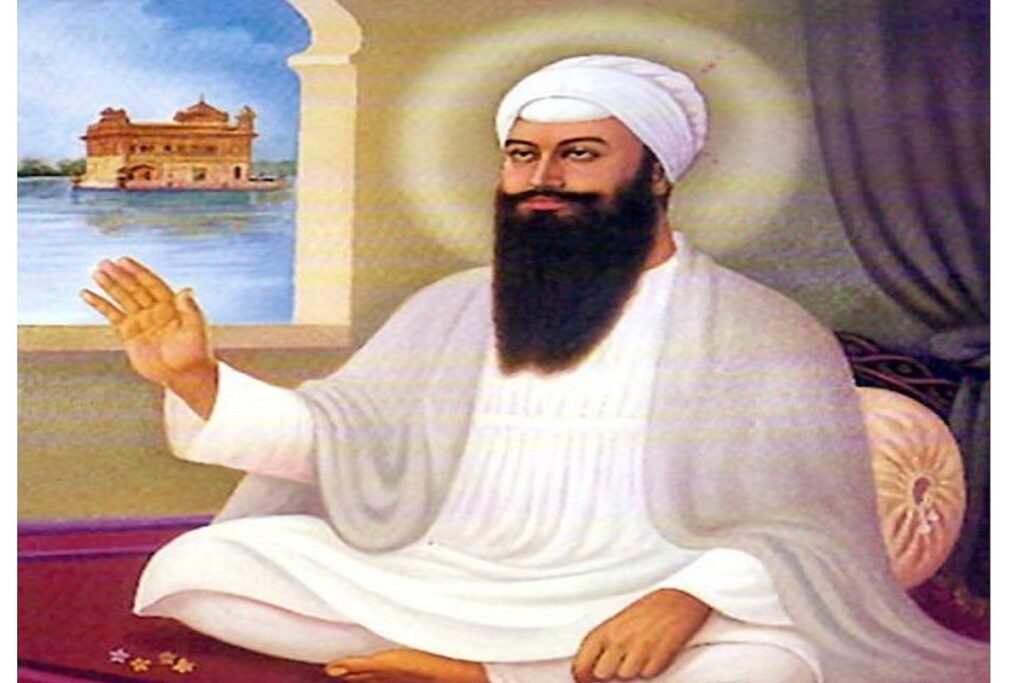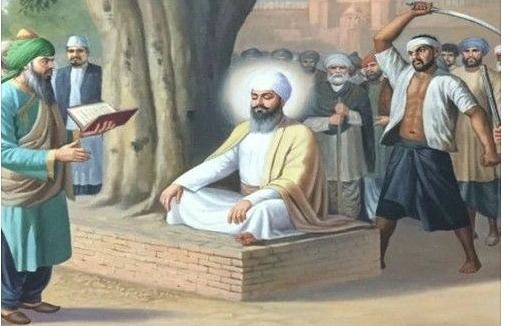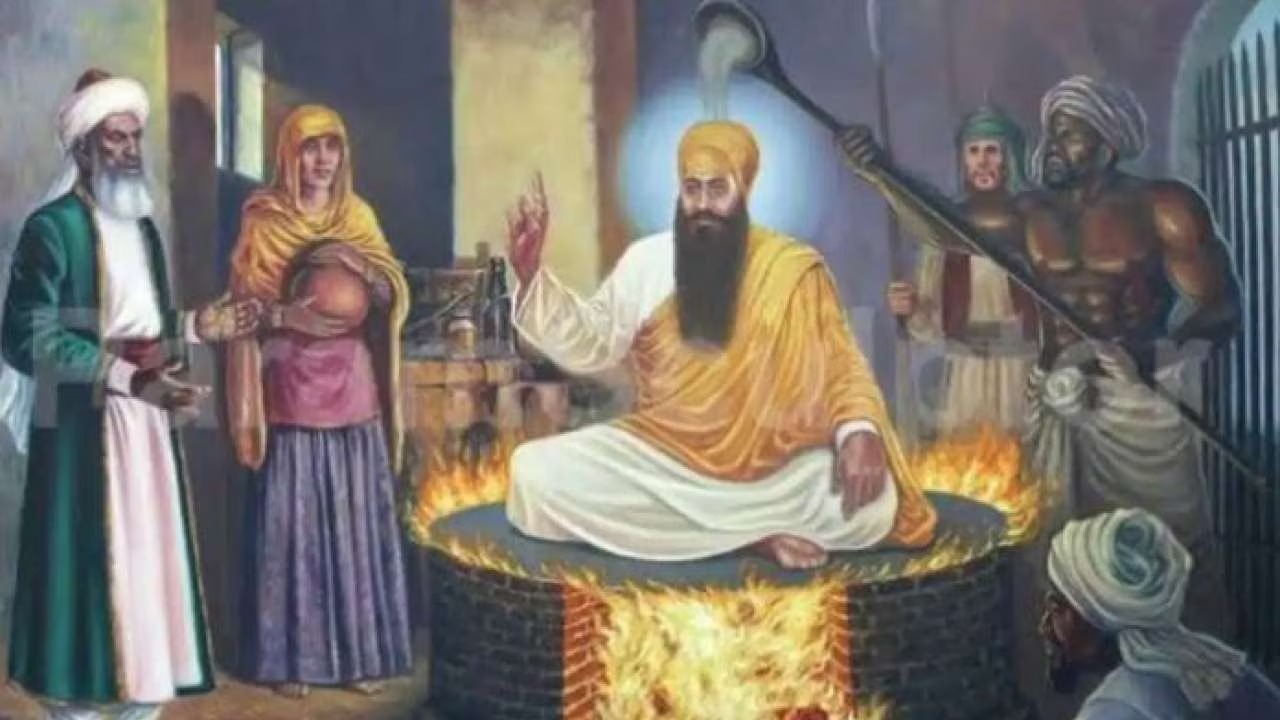परिचय
The martyrdom of Guru Arjan Dev in 1606 stands as a pivotal and deeply transformative moment in Sikh history. As the fifth Sikh Guru, Guru Arjan was recognized not only for his spiritual leadership but for shaping the Sikh faith’s core institutions—compiling the Adi Granth (the foundational Sikh scripture) and completing the Harmandir Sahib (Golden Temple) at Amritsar. His torture and execution by the Mughal authorities, under Emperor Jahangir, marked the first martyrdom in the Sikh tradition and catalyzed the transformation of the Sikh community from a pacifist movement to one embracing both spiritual and temporal sovereignty.

Background: Guru Arjan’s Life and Contributions
- Foundational Leadership: Guru Arjan Dev (born 1563, Goindwal, Punjab) elevated Sikhism’s social, spiritual, and practical character. He compiled the Adi Granth—incorporating the hymns of Sikh Gurus and other Indian saints—and installed it at the Harmandir Sahib in 1604, making it the eternal Guru for the Sikh community.
- Harmandir Sahib: He designed and oversaw the construction of the Golden Temple in Amritsar, establishing it as a locus for egalitarian worship.
- Social Initiatives: Guru Arjan consolidated the masand system, encouraging Sikhs to donate one-tenth of their earnings to the community, strengthening both spiritual and material bonds among Sikhs.
Rising Tensions with the Mughal Empire
The Sikh community flourished under Guru Arjan’s leadership, gaining followers from diverse backgrounds—Hindu and Muslim alike—across northern India. This growing influence aroused suspicion and resentment within the Mughal court and among local elites.
Key Factors Leading to Martyrdom:
- Religious Rivalry and Intolerance: Emperor Jahangir, unlike his father Akbar, did not tolerate the rising power of Sikhism, which he saw as a challenge to Mughal Islamic orthodoxy.
- Political Dynamics: Guru Arjan was accused of supporting Jahangir’s rebellious son, Khusrau Mirza, who stopped by at Guru Arjan’s congregation in 1606 while fleeing imperial troops. The Mughal establishment alleged the Guru had blessed Khusrau—an act interpreted as sedition.
- Economic and Social Threat: Guru Arjan’s substantial following and economic acumen (including possession of properties and wealth) further motivated his adversaries at court.
Arrest, Torture, and Execution
- In May 1606, on Jahangir’s orders, Guru Arjan Dev was arrested in Amritsar and taken to Lahore.
- He was tortured for five days in the brutal summer heat. Chroniclers recount that Guru Arjan was made to sit on scalding iron plates while boiling hot sand was poured over his body. Boiling water was poured atop wounds exposed by the heat, causing excruciating suffering.
- Despite unimaginable pain, Guru Arjan reportedly remained serene, reciting hymns and refusing to renounce Sikh beliefs or convert to Islam.
- On the fifth day, Guru Arjan requested to bathe in the Ravi River. Assisted by devotees, he entered the river, where, according to tradition, he disappeared—dying as a martyr and forever venerated by the Sikh community.
Aftermath and Impact
Immediate Consequences
- Transformation of Sikhism: The violent martyrdom of Guru Arjan shocked and galvanized the Sikh community. He instructed his son, Guru Hargobind, to take up both the spiritual regalia and the sword—to defend the faith, if needed, with arms.
- Militarization of Sikhs: Guru Hargobind, succeeding his father, instituted the concept of Miri-Piri (temporal and spiritual authority), leading the Sikhs to become a militarized community, prepared to resist oppression.
- Strengthening of Sikh Resolve: The martyrdom imparted a new sense of unity, courage, and purpose among Sikhs, who now saw spiritual steadfastness and martial valor as inseparable ideals.
ऐतिहासिक महत्व
- Guru Arjan’s sacrifice became a rallying symbol for justice, religious freedom, and resistance to tyranny—not only for Sikhs but for all communities facing persecution.
- His enduring legacy is the integration of faith with ethical action, and a community ethos committed to service, equality, and the defense of righteousness.
Commemoration
- Shaheedi Divas: The martyrdom of Guru Arjan Dev is commemorated annually, usually around June 16, as Shaheedi Divas. Sikhs observe quiet reflection, community service, and the reading of the Guru Granth Sahib. The day is also marked by the distribution of chabeel (sweetened water) in remembrance of the Guru’s suffering in the blistering summer heat.
- Gurudwara Dera Sahib: At the site by the Ravi River where Guru Arjan disappeared, the Gurudwara Dera Sahib in Lahore stands as a memorial to his martyrdom and spiritual endurance.
Interesting Facts
- Guru Arjan was the first Sikh martyr and is also regarded as the first Sikh Guru to lay down his life for religious freedom.
- He contributed the largest collection of hymns to the Guru Granth Sahib, shaping Sikh devotional practice for centuries.
- Guru Arjan’s execution was recorded in Jahangir’s own memoirs (Tuzuk-i-Jahangiri), where the emperor confessed to viewing the saint’s growing influence as a “false trade” that needed ending.
- Guru Arjan’s acceptance of suffering and his refusal to compromise the independence of the Sikh faith remains an emblem of dignity in the face of persecution.

निष्कर्ष
The martyrdom of Guru Arjan Dev in 1606 stands as a turning point in Sikh—and Indian—history. His steadfastness under torture, refusal to recant, and final sacrifice shaped the Sikh community’s character, spirit, and collective memory. The legacy of Guru Arjan endures both in the daily prayers of Sikhs and in the ongoing commitment to justice, resilience, and religious harmony.








इस बारे में प्रतिक्रिया दें